From Backyard Regulars to Jungle Ghosts: Wild Animals to Look Out For
Table of Contents
Living in Puerto Aventuras means sharing your space with an incredible range of wildlife—some bold and sunbathing on your patio, others lurking quietly in the jungle shadows. Whether you’re a curious visitor or a long-time resident, you’ve definitely spotted an iguana or two, maybe even a coati family crossing the road. But what about a jaguarundi? Or a Mexican porcupine?
This list ranks the wild animals in Puerto Aventuras from the ones you’re most likely to see on a daily walk to those that only reveal themselves on rare, lucky days—or not at all. (Bird lovers, don’t worry—we’re saving feathered friends for a separate post!)
Wild Animals in Puerto Aventuras You Are Most Likely to See
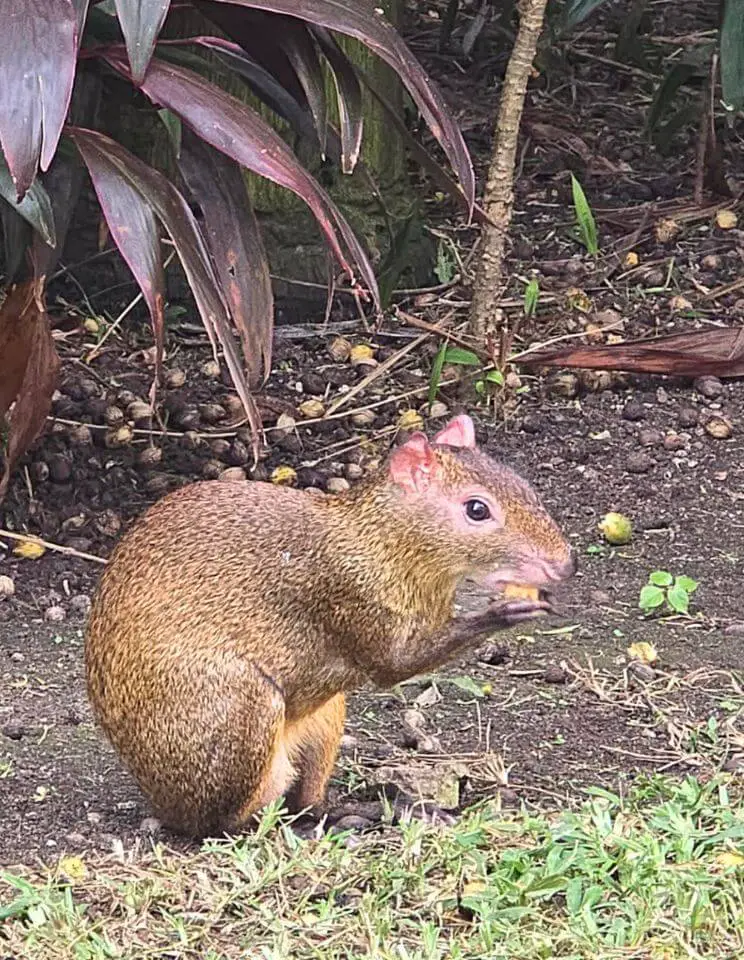
Agoutis – Also known as sereques, these nervous little vegetarians are often seen darting across lawns or lurking near wooded paths. Shaped like oversized guinea pigs on stilt legs, they’re most active during the day and tend to bolt at the first sign of movement. They are not very bright so be careful if you see one in the road. The mamas can be fiercely protective.
Geckos – Practically part of the furniture. These tiny, whisper-light lizards cling to walls and ceilings, chirping softly at night. They’re harmless, helpful insect-eaters—and kind of adorable, if you’re not startled by their sudden scuttling.
Iguanas (Black spiny-tailed and green iguanas) – The undisputed sunbathing kings of Puerto Aventuras. You’ll see them draped over stone walls, rooftops, and sidewalks, soaking up the heat like they own the place. The black spiny-tailed variety is more common, but the bright green juveniles add a splash of jungle color when spotted.

Mapaches (Raccoons) – Smart, sneaky, and shameless. These masked marauders come out after dark to rifle through trash bins or raid pet food bowls. They’re surprisingly agile climbers and have no problem letting themselves into a poorly secured screen door. Ask me how I know.
Yucatán Squirrels – Smaller and scrappier than their northern cousins, these shy rodents flash through trees and rooftops, rarely sitting still for long. Their bushy tails and cautious curiosity make them fun to spot if you’re patient. We have a pair in the yard that love to torture our dog—chirping and taunting them from the trees.
Bats – As the sun sets, bats take to the skies, zipping through the dusk in search of insects or ripe fruit. Some swoop low near pools or cenotes, others flicker past streetlights like fast-moving shadows. You may not always see them clearly—but they’re always there, quietly keeping the mosquito population in check and crapping on our cars.
Occasionally Seen

Spider Monkeys – Agile, expressive, and endlessly entertaining, spider monkeys still swing through the canopy in the deeper jungle pockets of the Riviera Maya. There are plenty of them living contently to the north in the Hard Rock resort property but if you want to see them in Puerto Aventuras, you’re more likely to find them “walking” down the street or sitting on your neighbor’s wall.
Basilisks (“Jesus Lizards”) – With their tall crests and uncanny ability to run across water, these jungle-dwelling reptiles look straight out of a sci-fi movie. Look for them near cenotes, fountains, or jungle edges—then watch them sprint like tiny dinosaurs when startled.
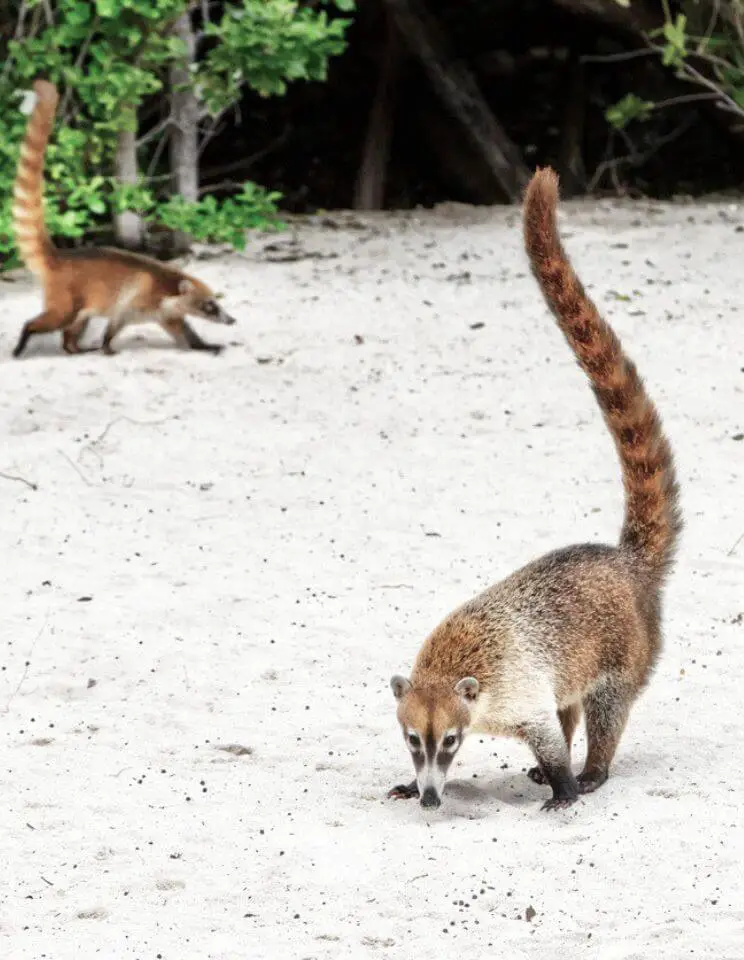
Coatimundi – With their long snouts and striped tails held high, coatimundi–more commonly known as just coati–often move in rowdy family packs. They’re like raccoons with better manners—though they’ll still raid your cooler or golf bag if you leave it unattended. Most active during the day and easy to spot along roadsides or the edges of the golf course.
Boa Constrictors – These powerful yet calm snakes are native to the region and occasionally show up in surprising places—under garden sheds, curled in trees, or even crossing bike paths. They’re not aggressive and usually just want to be left alone.
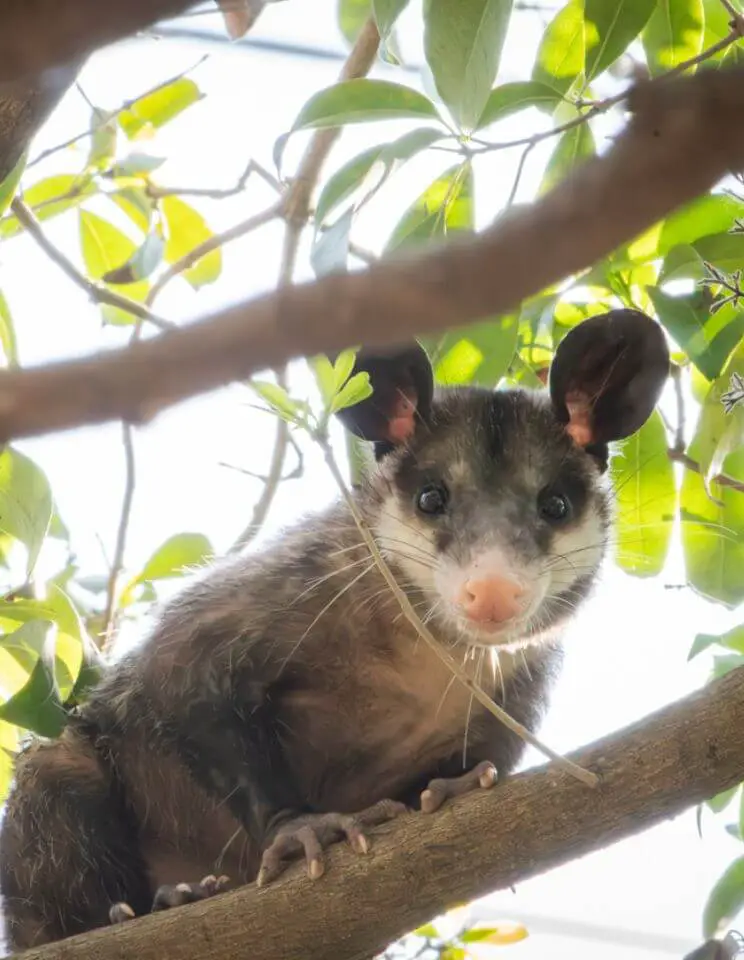
Tlacuaches (Opossums) – Mexico’s only native marsupial is a quiet, nocturnal scavenger. You’re more likely to spot them frozen in your headlights than in the wild, often waddling across streets or scaling fences after dark. Harmless, slightly scruffy, and terribly misunderstood.
Snakes (non-venomous) – From shy vine snakes to colorful milk snakes, Puerto Aventuras is home to a wide variety of non-venomous serpents. Most go unnoticed, slithering through leaf litter or hiding out during the day. Rainy season is when you’re most likely to see one out and about.
Rarely Seen (But Present in the Region)
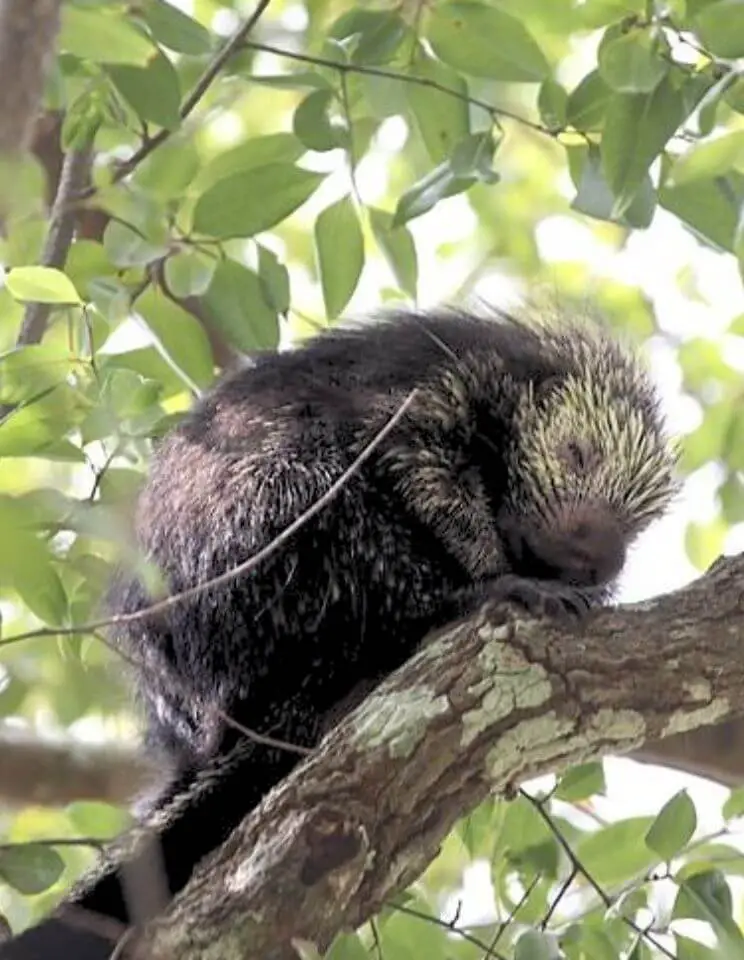
Mexican Dwarf Porcupine – This elusive, nocturnal tree-dweller looks more like a spiny plush toy than a threat. Covered in short yellowish spines and equipped with a prehensile tail, it spends its life in the canopy and is almost never seen—unless it wanders onto a rooftop or patio in the dead of night.
White-tailed Deer – Once more common in this region, these graceful, wide-eyed herbivores are now mostly found deeper in the jungle. Still, on an early morning walk on the edge of the golf course or along the trail in Central Park, you might catch one slipping quietly through the undergrowth.
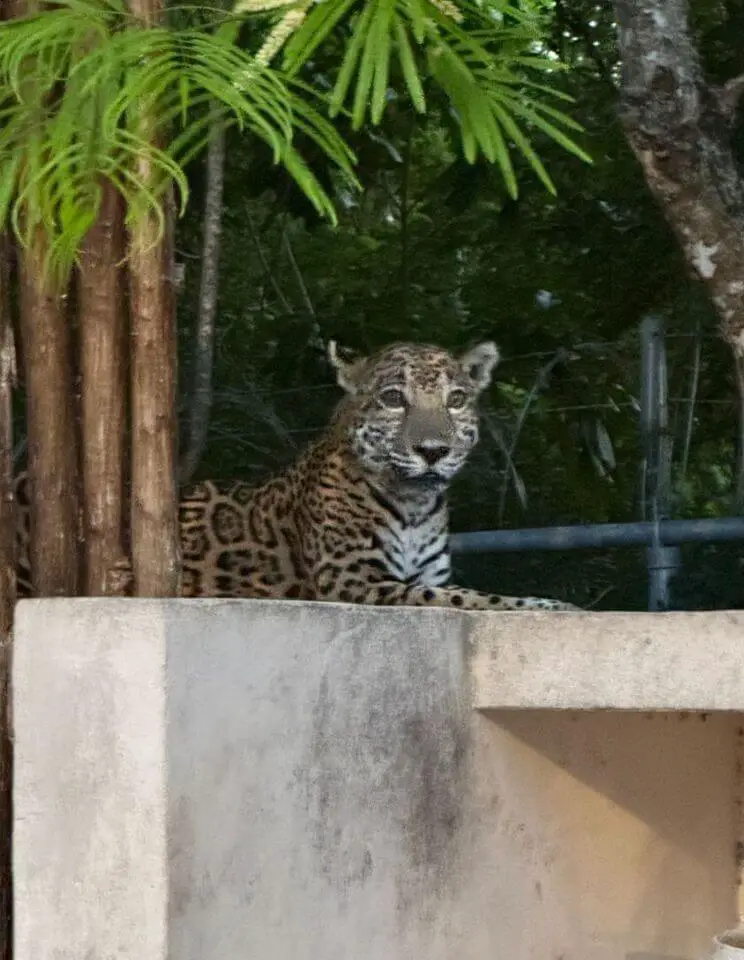
Jaguar – The apex predator of the Americas, jaguars once roamed freely through the Yucatán. Today, they are critically endangered and sightings are vanishingly rare—though recent encounters, motion-triggered cameras and conservation patrols have confirmed their presence in Puerto Aventuras. Their survival depends on preserving jungle corridors and reducing human-wildlife conflict.
Snakes (Venomous) – While most local snakes are harmless, a few venomous species do call the area home—including the small but vibrant coralillo (coral snake), and the infamous nauyaca (Fer-de-lance). These snakes are highly reclusive and not often seen unless disturbed. If you’re walking in jungle areas, especially during or after rain, it’s wise to stay on the path and wear closed shoes.
Jaguarundi – Like a weasel and a housecat had a stealthy jungle baby, the jaguarundi is long-bodied, low to the ground, and completely uninterested in being seen. It hunts during the day but sticks to dense vegetation, making even rare sightings feel like hallucinations. I saw one once on the access road from 307 into Paamul.
Ocelot – With its marbled fur and piercing eyes, the ocelot is arguably the most beautiful cat in the region—and one of the most elusive. Solitary and nocturnal, it ranges quietly through protected forest patches, though it’s almost never spotted close to human development.
Living Together With Nature
One of the things that makes Puerto Aventuras so special is the sense that nature isn’t “out there”—it’s right here, woven into everyday life. Seeing a basilisk dash across your path or watching agoutis forage near your garden is a reminder that this place still pulses with wild energy.
But that also means we share responsibility. Spotting rare wildlife is a gift, and protecting their habitat ensures these creatures continue to thrive—even the ones we may never see with our own eyes.
Seen something amazing in your backyard lately? I’d love to hear about it—drop a comment below or tag me in your wildlife encounters.

